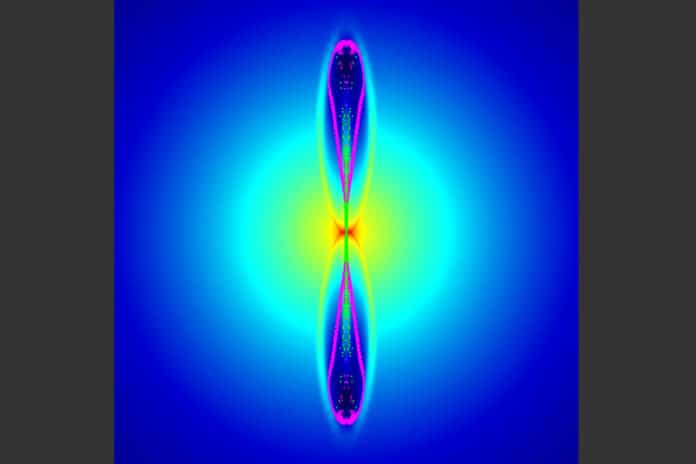After the Big Bang and before the first stars ignited, the universe was a very dark and cold place. There were no galaxies, no supernovae, and no quasars. The universe primarily consisted of neutral hydrogen gas floating in an omnipresent sea of background radiation leftover from the Big Bang. Over time, gravity slowly shepherded the densest regions of hydrogen gas into compact clouds, which ultimately collapsed to form the first stars.
These very first stars flared into the universe as massively bright accumulations of hydrogen and helium gas. Inside the core of them, extreme, thermonuclear reactions forged the first heavier elements, including carbon, iron, and zinc.
According to a recent study by the MIT, the first stars emerged apart in a more powerful, asymmetric fashion, spewing forth jets that were violent enough to eject heavy elements into neighboring galaxies. These elements ultimately served as seeds for the second generation of stars, some of which can still be observed today.
Scientists reported that an ancient star called HE 1327-2326 has a strong abundance of zinc. According to scientists, this star contains such amount of zinc after an asymmetric explosion of one of the very first stars had enriched its birth gas cloud.
Anna Frebel, an associate professor of physics at MIT and a member of MIT’s Kavli Institute for Astrophysics and Space Research said, “When a star explodes, some proportion of that star gets sucked into a black hole like a vacuum cleaner. Only when you have some kind of mechanism, like a jet that can yank out material, can you observe that material later in a next-generation star. And we believe that’s exactly what could have happened here.”
MIT postdoc Rana Ezzeddine, the study’s lead author said, “This is the first observational evidence that such an asymmetric supernova took place in the early universe. This changes our understanding of how the first stars exploded.”
HE1327-2326 was primarily discovered in 2005 by Anna Frebel and collaborators. At that time, the star had extremely low concentrations of elements heavier than hydrogen and helium. This indicates that the star originated as part of the second generation of stars, at a time when most of the universe’s heavy element content had yet to be forged.
Later on, in 2016, scientists discovered the star which orbits close to Earth, just 5,000 light years away. The researchers won time on NASA’s Hubble Space Telescope over two weeks and recorded the starlight over multiple orbits. They used an instrument aboard the telescope, the Cosmic Origins Spectrograph, to measure the minute abundances of various elements within the star.

Image: Melanie Gonick
Then in collaboration with Japan specialists, scientists any more than 10,000 simulations of the supernovae, each with different explosion energies, configurations, and other parameters. Doing this unveilied hat while most of the spherical supernova simulations were able to produce a secondary star with the elemental compositions the researchers observed in HE 1327-2326, none of them reproduced the zinc signal.
As it turns out, the only simulation that could explain the star’s makeup, including its high abundance of zinc, was one of an aspherical, jet-ejecting supernova of a first star. Such a supernova would have been extremely explosive, with a power equivalent to about a nonillion times (that’s 10 with 30 zeroes after it) that of a hydrogen bomb.
Ezzeddine said, “We found this first supernova was much more energetic than people have thought before, about five to 10 times more. In fact, the previous idea of the existence of a dimmer supernova to explain the second-generation stars may soon need to be retired.”
The outcomes of the study are expected to increase understanding of reionization, a pivotal period during which the gas in the universe morphed from being completely neutral to ionized — a state that made it possible for galaxies to take shape.
Frebel said: “People thought from early observations that the first stars were not so bright or energetic, and so when they exploded, they wouldn’t participate much in reionizing the universe. We’re in some sense rectifying this picture and showing, maybe the first stars had enough oomph when they exploded, and maybe now they are strong contenders for contributing to reionization, and for wreaking havoc in their own little dwarf galaxies.”
“These first supernovae could have also been powerful enough to shoot heavy elements into neighboring “virgin galaxies” that had yet to form any stars of their own.”
“Once you have some heavy elements in a hydrogen and helium gas, you have a much easier time forming stars, especially little ones. The working hypothesis is, maybe second generation stars of this kind formed in these polluted virgin systems, and not in the same system as the supernova explosion itself, which is always what we had assumed, without thinking in any other way. So this is opening up a new channel for early star formation.”
The paper is published today in the Astrophysical Journal.
